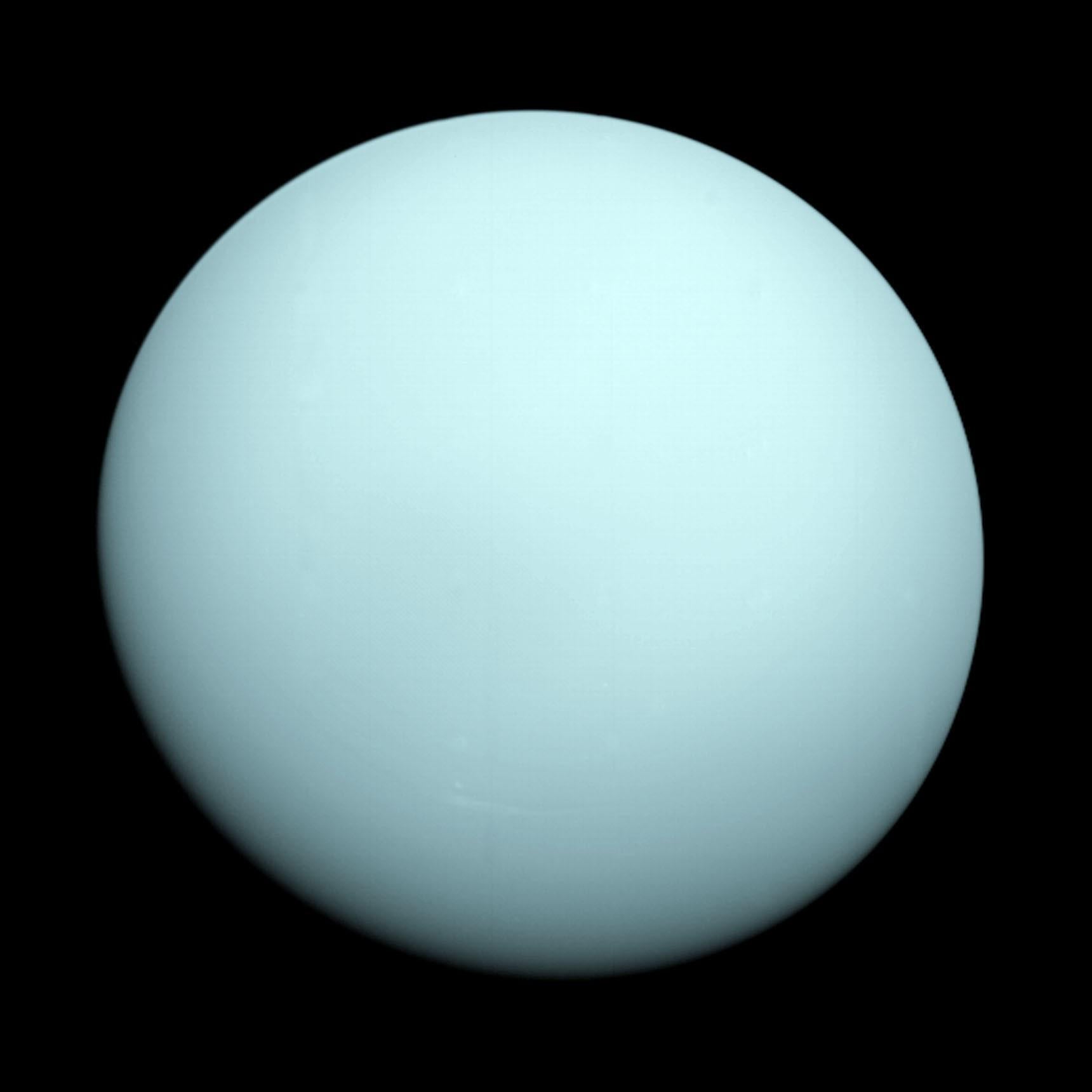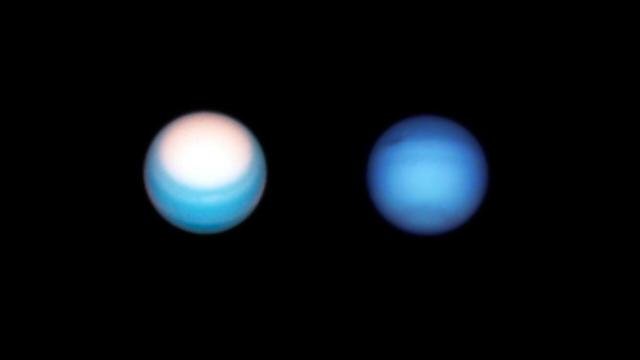Astronomers may have just cracked a confounding solar system mystery: why our two ice giants come in different colours.
Uranus and Neptune have a lot of similar qualities, and yet Neptune is a deeper, more vibrant blue. By creating an atmospheric model of both planets, a team of astronomers discovered excess haze that builds up in Uranus’ atmosphere that causes it to don a milky white hue in comparison to Neptune.
Uranus and Neptune are the seventh and eighth planets from the Sun, and they much larger than the rocky inner planets. These two icy worlds are roughly the same size and mass, and they also have similar composition and a fast spin rate.
Using observations from the Hubble Space Telescope, the Gemini North telescope, and the NASA Infrared Telescope Facility, the researchers created a single model that matches the data gathered about the two planets. And while previous models captured the planets’ atmospheres in certain wavelengths, this new model looked at a wider range of wavelengths and probed multiple layers of the atmospheres.
In general, the colour of a planet is determined by what elements the planet is made of and how its atmosphere reflects and absorbs light from the Sun.

The middle layer of the atmosphere is the one mainly responsible for Neptune and Uranus’ colours. That layer is made up of haze particles, and it happens to be thicker on Uranus than it is on Neptune. That may be because Neptune has a more active atmosphere that churns up particles of methane gas to produce methane ice, according to the study published in the journal Advancing Earth and Space Science. The methane ice condenses onto the haze particles in this layer to produce snow storms, clearing out some of the haze in Neptune’s atmosphere. This results in the slight difference of colour between the planets, with the thicker layer of haze on Uranus giving it a milky white hue.
“We hoped that developing this model would help us understand clouds and hazes in the ice giant atmospheres,” Mike Wong, an astronomer at the University of California, Berkeley, said in an ESA release. “Explaining the difference in colour between Uranus and Neptune was an unexpected bonus!”
The ice giants, over a billion miles away, are tough to reach by spacecraft, but the scientists believe that new missions to visit them would alter our perspective of the solar system. So far, NASA’s Voyager 2 is the only spacecraft to have visited Uranus and Neptune, back in the 1980s. But a recent report by the National Academies of Sciences, Engineering, and Medicine called for a spacecraft to orbit Uranus and map out its gravitational and magnetic fields, marking it as a top priority for planetary science this decade.
